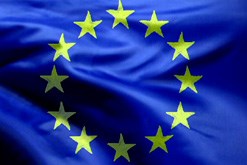- Published: 28.07.2013.
European tourism sees tempered growth in pre-summer season
Data for the pre-summer period indicate a tempered growth for European tourism, with most destinations reporting positive growth in the March-June period, the European Travel Commission (ETC) said in a report on Friday.
The report, entitled "European Tourism 2013 - Trends & Prospects", says that there is growing optimism that the upcoming peak summer season will consolidate preliminary positive expectations for 2013, ranging from 1% to 3% growth.
ETC says that the negative economic environment requires coordinated measures of both the public and private sectors to develop coherent initiatives and sustain growth.
"The need arises for the heterogeneous tourism sector to harmonise actions aimed to sustain growth. To effectively steer the industry and achieve growth objectives, public and private bodies need to unite behind the ambition for growth, and develop coherent initiatives. If not well orchestrated, the threat is for individual efforts to vanish," the report says.
Figures from a vast majority of 22 destinations that have reported on tourist arrivals for the March-June period show growth, with smaller destinations reporting increases in foreign arrivals.
"Iceland and Slovakia stage the strongest performance with a surge in foreign arrivals of 30% and 20%, respectively. Montenegro, Latvia and Croatia follow with a growth around 9%, Hungary and Poland with a growth of 7%. At the other end of the spectrum, Cyprus (-12%) suffers amid the negative publicity received at the beginning of the year. Among the largest destinations, Germany and Spain post a healthy 4% on top of previous year's positive results. The UK eventually returns to positive growth (+1%), while Italy marks a depressed -2%.
"Growth in overnights remains subdued compared to that of arrivals, as travellers remain cost conscious. Notable exceptions are Latvia (+9% in arrivals and
+14% in overnights), Croatia (+9% and +11% respectively), Malta (+7% and +10% respectively) and Czech Republic (+3% and +4%). The reverse trend in these destinations finds its roots in increasing visits from long-stay markets and segments, the establishment of new connections with medium and long haul markets or reduced fiscal pressure on tourism services," the report says. (Hina)
